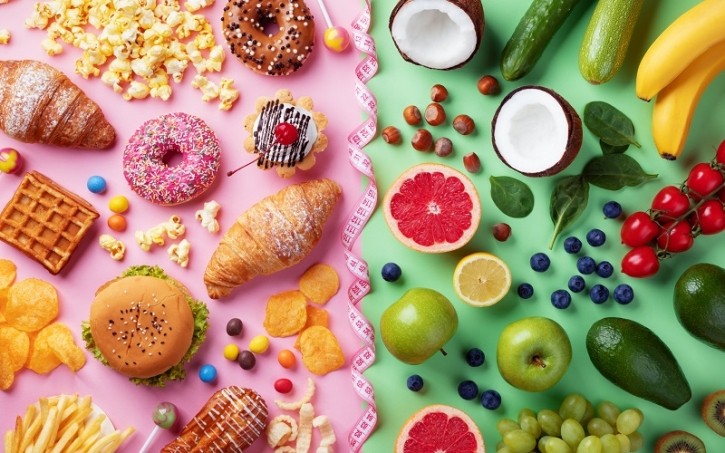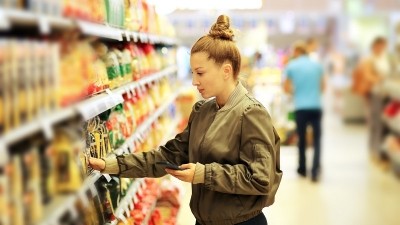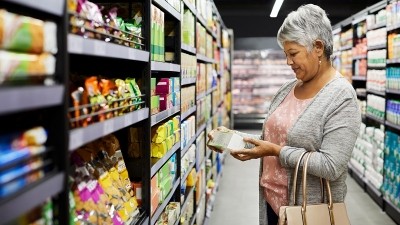Consumers are willing to buy ‘healthier’ ultra-processed foods, but will the industry deliver?

"Ultra-processed foods have been demonized for a long time ... but ultra-processed foods are a necessary evil ... largely because the reality is most people can't afford to eat fresh food. That was true before COVID, and it's even more so after COVID when basic staple prices for fresh foods increased," Ayana Bio CEO Frank Jaksch told FoodNavigator-USA.
Consumers are open to healthier ultra-processed foods
Ayana Bio conducted a survey of more than 2,000 US consumers "to get an idea of what people thought of, what they perceived as ultra-processed foods, and how would they perceive potential fixes for ultra processed foods," he said. The survey also defined UPFs as “foods that have gone through multiple levels of processing and contain additives such as preservatives, sweeteners, sensory enhancers, colorants, flavors, and processing aids,” the company shared in a press release.
In the survey, most consumers (57%) said they believe UPFs are bad for their health, and 64% classified "healthier" foods as having more nutritional value and less fats, sugars, and salts. However, most (74%) consumers were open to trying healthier UPFs if they could improve brain or immunity health, sleep quality, or boost energy levels, the survey added.
In Mintel's 2024 Global Food & Drinks Trends report, the research group found consumers are increasingly concerned about UPFs, with 34% of the 2,000 US consumers surveyed saying said that it’s a top concern aside from price and taste.
Consumers are inspecting labels more carefully for ingredients, a trend influenced by the clean-label movement, and becoming more critical of what they put in their body, Jenny Zegler, director of food and drink and global consumer for Mintel, told FoodNavigator-USA.
"The discussion around highly processed connects a little bit to the debate about junk food, and is this food ... a 'sometimes food,' is it something I know I shouldn't have all the time, but I really enjoy it, or it makes me feel good, so I'm going to make that exception," she said.
Similarly, Jaksch noted, “post-COVID, more people are paying attention to reading the labels than they were before... that trend has been increasing pretty consistently over the past 10 years.”
How lack of fiber, added sugar in UPFs impacts health
The debate about UPFs role in the US diet also comes at a time when more research is being done on the impact of UPFs on human health and how the food and beverage industry can create healthier foods, Robert Lustig, professor emeritus of pediatrics, division of endocrinology at UCSF, told FoodNavigator-USA.
The start of today’s UPFs debate came from Brazilian nutritionist Carlos Montero, who used "databases of what foods were being consumed versus what diseases people were manifesting," and found those who consumed UPFs had a higher rate of chronic metabolic disease, he said.
In studying UPFs, Montero devised the NOVA System, which provide a four-tiered ranking system on how processed a food, including NOVA1 for unprocessed food, NOVA2 for processed culinary ingredients, NOVA3 for processed foods, and NOVA4 for ultra-processed foods. The NOVA system has been criticized over the years for spotlighting what not to eat as opposed to what to eat and for being an overly blunt instrument, while researchers have defended it as an efficient way of classifying foods.
“If I had to basically sum up what's wrong with ultra-processed [food], it's that sugar has been added for palatability, and the fibers have been taken out for shelf life, and it turns out that both of those are enormously bad for food, and therefore, bad for us," Lustig said.
The added sugar in UPFs has been associated with impacted metabolic health, Lustig said. While sugar and protein have the same number of calories (four calories per gram), the problem is the fructose molecule in sugar "inhibits mitochondrial function [and] if you inhibit mitochondrial function that means you're not burning [calories]," he said.
“It turns out glucose helps stimulate mitochondria to burn. Glucose, for lack of a better word, we can call it good. Fructose, on the other hand, the sweet molecule in sugar, the molecule that ... we seek, the molecule that is addictive, turns out that molecule is a mitochondrial inhibitor. It inhibits three separate enzymes that are necessary for mitochondria to function.”
The other problem with UPFs is that many lack the fiber content, and too little fiber in a diet can lead to leaky gut, which opens up consumers to a host of diseases, he added.
“Fiber turns out to be the food for your bacteria in your intestine. Fiber is absolutely essential. It's necessary, but we don't understand that. We think that the fiber is just junk, garbage. We think that the fiber is what doesn't taste good. Turns out the bacteria in your intestine utilizes fiber as its food, and if you don't feed your intestinal bacteria, your intestinal bacteria will feed on you.”
Where does the food, beverage industry go from here?
CPG companies can develop better-for-you UPFs, and they can play an active role in educating consumers about processing and how it can be a tool for good, Zegler said.
“There are a lot of benefits that can come from processing, and we could have enhanced the nutrition of something. We could be extending its shelf life. We could be making something more sustainable. So, really helping [consumers] understand that you might be hearing these rumors that processing is bad, but hey, this is a food that you know and love, and it is processed in some way. But what we've done is that we've increased the nutrition, or we've made it [with] less sugar.”
CPG companies like Coca-Cola, PepsiCo, and others have reduced the sugar and fat content of their products. However, these companies need to focus on the other side of improving UPFs by adding back in the nutrition these products lack, Jaksch noted.
“The reductionist side is actually easier than adding actual nutrition back in. So, they all embraced the idea of sugar reduction and salt reduction and getting rid of calories and potentially even finding better ways of ... eliminating or reducing fat or changing fat sources,” he said. “You've done the easy part. Now, let's talk about the elephant in the room, which is the big part, which is how you're going to actually put nutritive value in these products.”
Agreeing that CPG brands can create better-for-you UPFs, Lustig explained that the focus has to be less on simply reformulating product (swapping one ingredient for another) and more on reengineering product portfolios with a keen focus on ingredients that’ll promote metabolic health and overall nutrition.
Earlier this year, Lustig and several colleagues published a paper, which detailed how to create UPFs that support metabolic health, through their work with the Kuwaiti Danish Dairy (KDD) Company.
Few big food and beverage CPG companies have taken this holistic approach to creating foods and beverages, and if they’re publicly traded, they might feel that they need to continue to support their current product assortment out of fear of losing market share, Lustig explained.
“The reason KDD could do it is because they're privately held, and they are not on any stock exchange. So, they could afford to take the long view. There are other companies that are doing the same thing like Mars, and they are looking at this very carefully. So, it's not like it can't be done.”























